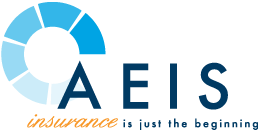Beyond Enrollment: The Hidden ROI of Employee Benefits Education
Open enrollment may be the most visible moment in an employee benefits program, but it is only the beginning. When employees understand how to use their benefits, not just what they are offered, they are more likely to make smarter, cost-effective choices that benefit both themselves and their employers. In today’s competitive labor market, small and mid-sized businesses cannot afford to overlook the long-term value of employee benefits education. This is not just an HR initiative; it is a business strategy with a measurable return on investment (ROI).
When Employees Miss the Value of Benefits, Your Business Pays the Price
Increased Healthcare Expenses for Both Employers and Employees
Employees who are uninformed about their benefits tend to default to higher-cost options, such as unnecessary ER visits or out-of-network providers. These choices directly affect employer costs, especially under self-funded or shared-cost plans. On the employee side, confusion leads to missed opportunities for lower-cost care, resulting in unexpected bills and financial stress.
Missed Opportunities for Preventive Care and Savings
Without clear guidance, employees often skip preventive services like annual checkups, screenings, and vaccinations, all of which are typically covered at no cost under many plans. Preventive care can catch health issues early, avoiding expensive treatments later. Skipping these services not only impacts employee well-being but also increases long-term healthcare expenses.
Rising Frustration, Burnout, and Turnover Tied to Confusion
When employees don't understand their benefits, frustration builds. They may delay care, experience billing surprises, or feel unsupported by HR. Over time, this confusion erodes trust in the organization, increasing turnover and disengagement. In a market where retaining talent is critical, clarity in benefits communication is more than a nice-to-have; it is essential.

The ROI of Investing in Benefits Education
Smarter Healthcare Decisions Lead to Lower Overall Costs
Well-informed employees are more likely to choose in-network providers, use urgent care instead of the ER, and take advantage of telehealth or preventive services. These decisions reduce claims costs and help maintain more stable premiums year over year.
Improved Employee Satisfaction and Retention
Employees who understand their benefits feel more secure, supported, and valued. This leads to higher job satisfaction, which in turn reduces turnover. Replacing employees is costly, especially when factoring in recruitment, training, and lost productivity. Benefits education is a cost-effective way to strengthen employee loyalty.
Measurable Impact on Productivity and Absenteeism
Healthier employees are more productive and less likely to miss work. When workers use preventive services and manage chronic conditions effectively, absenteeism declines. A proactive benefits education strategy contributes to a healthier, more present workforce.
Stronger Perception of Company Culture and Value
A company that invests in employee understanding sends a clear message: we care. Transparent, ongoing communication about benefits fosters a sense of trust and inclusivity. This strengthens organizational culture and positions your business as an employer of choice.
Enhanced Compliance and Reduced Administrative Risk
Effective benefits education can reduce errors in enrollment and help employees stay in compliance with regulatory requirements, such as required documentation or timely reporting. This decreases the likelihood of costly penalties and reduces the burden on HR teams managing corrections or disputes.
Key Components of an Effective Benefits Education Program & Communication Strategy
Clear Communication and Accessible Language
Avoid jargon. Use plain language to explain options, deadlines, and processes. Visual aids, FAQs, and real-life scenarios can help make complex topics easier to understand.
Personalized Learning Opportunities in Multiple Formats
Different employees learn in different ways. Offer live webinars, recorded videos, printed guides, interactive tools, and one-on-one support. Tailor communications to address the needs of different age groups, family situations, and coverage levels.
Continuous Process Driving Feedback and Improvements
Benefits education should not be limited to open enrollment. Implement regular touchpoints throughout the year to reinforce key concepts, address common questions, and gather feedback. Use surveys or digital analytics to refine the approach based on engagement levels.
Clear Accessible Channels to Reach Easy Support
Employees should know exactly where to go with questions and receive timely, helpful responses. Whether it is a dedicated benefits email address, a chat tool, or scheduled office hours with an HR specialist, support must be consistent and accessible.
Leveraging Technology for Benefits Education
Digital platforms can streamline and personalize benefits education. Interactive decision-support tools, benefits portals, and mobile apps empower employees to explore their options on their own time. Businesses are also beginning to experiment with AI and large language models (LLMs) to create chat-based support tools or customize learning paths for different users. These innovations make benefits education scalable and more responsive to individual needs.
Best Practices for Small and Mid-Sized Businesses
Start early: Begin educating employees weeks before open enrollment, not days.
Partner with your broker: Leverage their resources for presentations, materials, and Q&A support.
- Designate internal champions: Identify team members who can answer questions and reinforce key messages.
- Track engagement: Use digital tools to measure who is engaging with materials and follow up accordingly.
- Encourage questions: Create a culture where asking about benefits is welcomed and supported.

Ready to Improve Employee Understanding and Reduce Costs?
A robust employee benefits education strategy pays dividends long after open enrollment ends. From cost savings to improved morale and compliance, the advantages are clear. For small and mid-sized businesses, investing in benefits education is not an added expense; it is a strategic imperative.
If you are ready to strengthen your benefits communication, improve employee engagement, and reduce healthcare-related costs, AEIS is here to help. Our team works with you to develop tailored strategies that fit your business goals and your team’s needs.
Disclaimer: Any information related to compliance, laws and regulations, or other subject matters in this blog is intended to be informational and does not constitute legal advice regarding any specific situation. The content of this blog is based on the most up-to-date information that was available on the date it was published and could be subject to change. Should you require further assistance or legal advice, please consult a licensed attorney.



